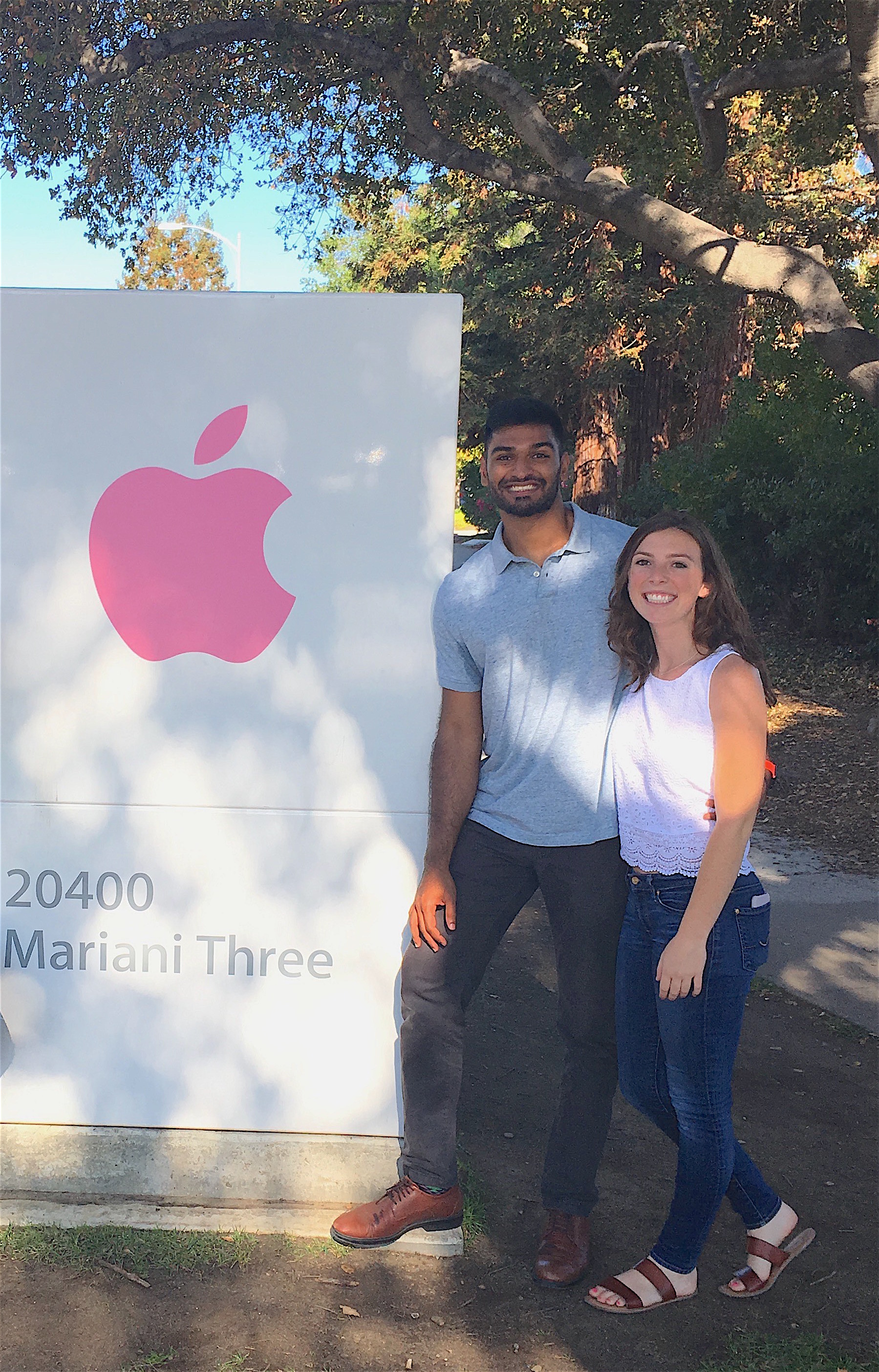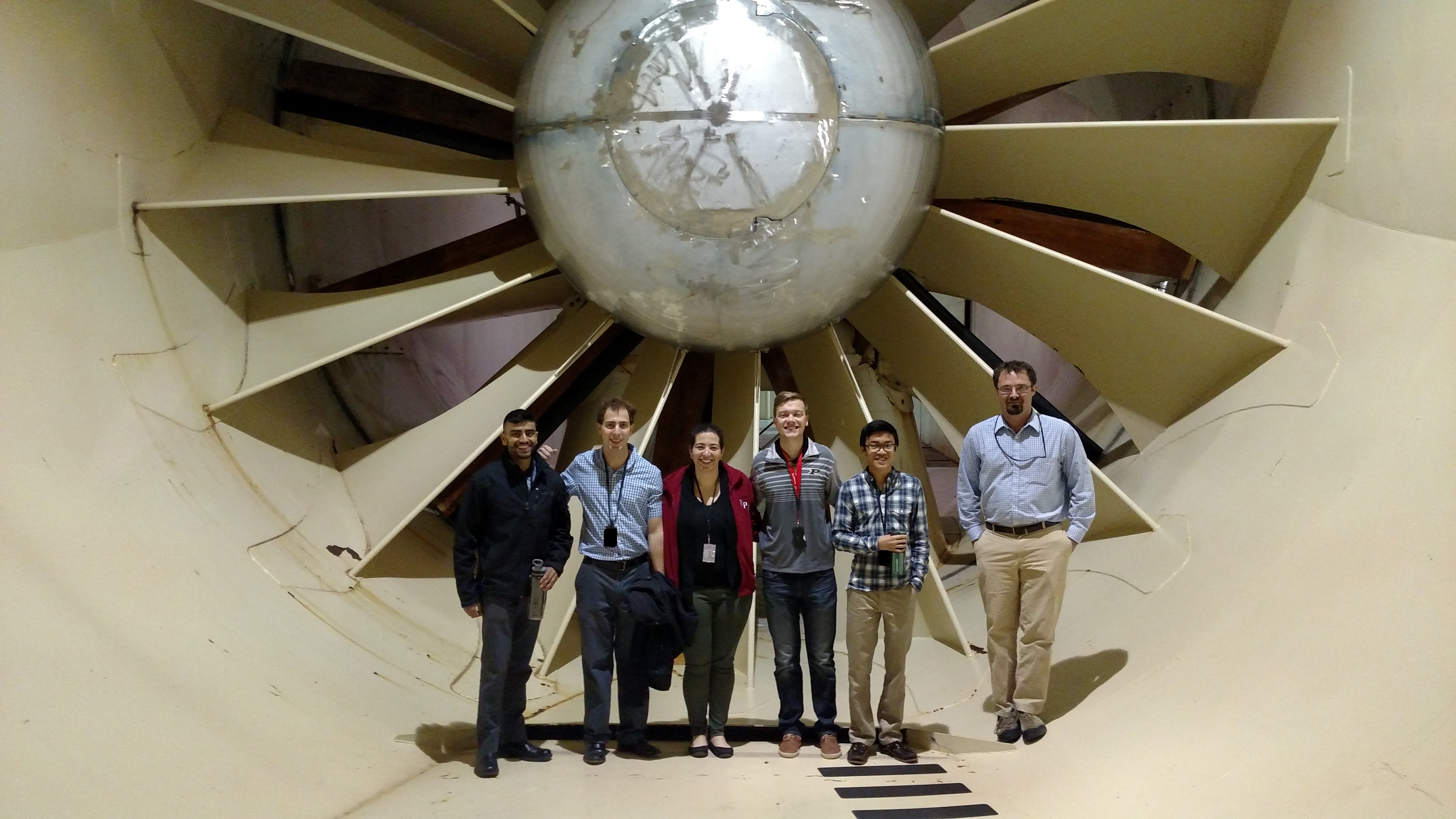Nontraditional internships broaden horizons for Weldon School undergraduates
Although not typical hiring havens for BMEs, such companies are discovering how relevant and applicable the BME degrees has become.
Covert and Ganesh, both seniors, received emails in mid-December 2015 about internships at Apple Inc. A few days later, and after a series of virtual interviews, they sealed the deal. In early January 2016, Covert and Ganesh reported to Apple’s headquarters in Cupertino, California.
 Apple’s health care focus
Apple’s health care focus
Ganesh worked with Apple’s Health Technologies’ feasibility study team from January to August 2016. There, he designed and conducted synchronized multi-signal human user studies to provide data from prototypes under evaluation for health, wellness and fitness sensors, systems and applications. He also developed and streamlined the data collection process to improve the user experience for participants.
“This was a very nontraditional opportunity for a biomedical engineering student. In fact, Kelly and I might have been the only BME interns who were at Apple at that time,” Ganesh says. “But I think this is starting to change.”
Covert focused on small-scale user studies to test the feasibility of prototype sensors for the Apple Watch, collecting data and working with human subjects — building on her concussion research in Purdue Professor Eric Nauman’s lab. “I really wasn’t looking to go on a co-op or internship, but I did not want to pass up an opportunity to work for Apple,” she says.
Applying BME coursework
Ganesh says he was surprised how quickly he applied concepts and techniques he had learned in BME 256, Physiological Modeling in Human Health, and BME 301, Bioelectricity. Now, because of his Apple experience, he plans to minor in electrical and computer engineering to complement his BME degree. He hopes to go on to graduate school; he’s considering Purdue, Stanford University or the University of California, Berkeley.
Because he worked on products that have not been announced, Ganesh can’t disclose the specific applications of his projects at Apple. But his assigned team has contributed to high-profile products such as the iWatch and iPhone. Preparing him for his work at Apple was what he learned at Purdue under Zhongming Liu, assistant professor of biomedical engineering. And, his group leader at Apple was Purdue Engineering alumna Anne Shelchuk.
“It was definitely a hands-on experience,” Ganesh says. “Thanks to the team culture, my supervisors were very open to questions. The project leaders were very helpful when I ran into a problem.”
Covert tested wheelchair settings for an Apple Watch update that allows wheelchair users to receive calorimetry data and the distance they traveled that day. The team also tailored other Apple Watch features for wheelchair users. On a separate project, she tested open-water swimming for the Apple Watch. “This required countless hours in the bay acquiring data on open-water swimmers to make sure the sensors were working properly and accurately,” she says.
Human health in space

For Markley, the spring 2016 internship at NASA’s Glenn Research Center in Cleveland, Ohio, was a dream come true. His role with the Human Research Program’s Exercise Countermeasures Lab: use modeling software OpenSim to test exercise equipment prototypes designed to counteract muscle loss and degradation of bone during longer-mission spaceflights.
From motion-capture data, Markley created a musculoskeletal model with images highlighting connections of muscles, bones and joints. The simulations showed the muscle forces and the stresses and strains on joints from various forms of exercise. Throughout the spring semester internship, Markley says he applied techniques he learned in his Purdue classes where he was exposed to the MATLAB programming language as well as the fundamentals of bioelectricity.
“What I learned from the Purdue BME program was instrumental to how I approached and designed projects,” Markley says. “At NASA, my background and understanding of muscle forces and the structural anatomy of the body really helped me understand the models I was working with and what the numbers in the data meant. It allowed me to hit the ground running in solving problems and even having a better understanding of how to improve the model.”
Covert, who hopes to pursue an industry career after she graduates in December, says the rigors of Purdue’s BME program prepared her for the work and different projects she had to juggle at Apple. “A lot of times I was faced with a difficulty, and I had to use problem-solving skills to figure it out because there wasn’t always someone readily available to help, and I know my coursework prepared me for that aspect of work. I think the life lessons that BME has taught me were highly useful in my experience at Apple.”
Thinking of the future — now
Ganesh says his internship experience at Apple “was a massive step” for developing his career as a biomedical engineer. “Working at Apple, everyone knows that the people there have been successful in their previous careers and that they possess certain qualities, qualities that make the company successful as a whole. That was definitely something I spent quite a bit of time trying to analyze and observe, to soak it all in — to watch my co-workers to see what they do differently and what makes them stand apart.”
Markley, who will join Eli Lilly & Co.’s Information Technology Division in Indianapolis after graduation, realized his NASA internship during the school year meant he would miss the fun and activities of Purdue campus life. But he wouldn’t trade his time at NASA for anything. “If I’m talking to students, I would encourage them to take that leap. The experiences you can gain in an internship are invaluable to your career and to your design-thinking in the future.”
Photo Captions
Top photo: Vivek Ganesh, left, and Kelly Covert spent eight months as interns at Apple, applying their biomedical engineering studies from Purdue for developing and refining applications for the company’s wearable devices.
Bottom photo: For Evan Markley, fourth from left, the opportunity to intern at NASA’s Glenn Research Center was a dream come true as he focused on research that might help space travelers retain muscle strength and bone structure as they travel to Mars.
